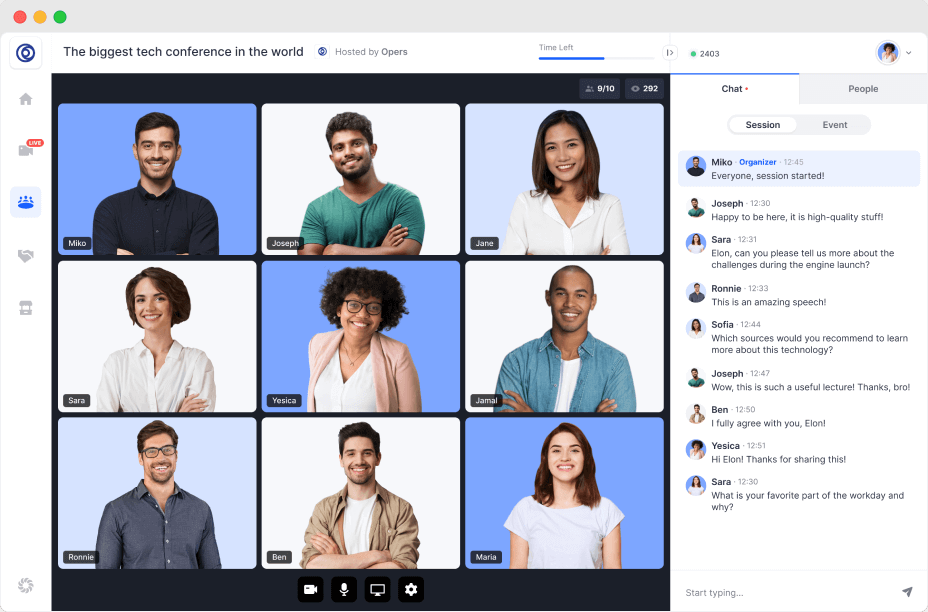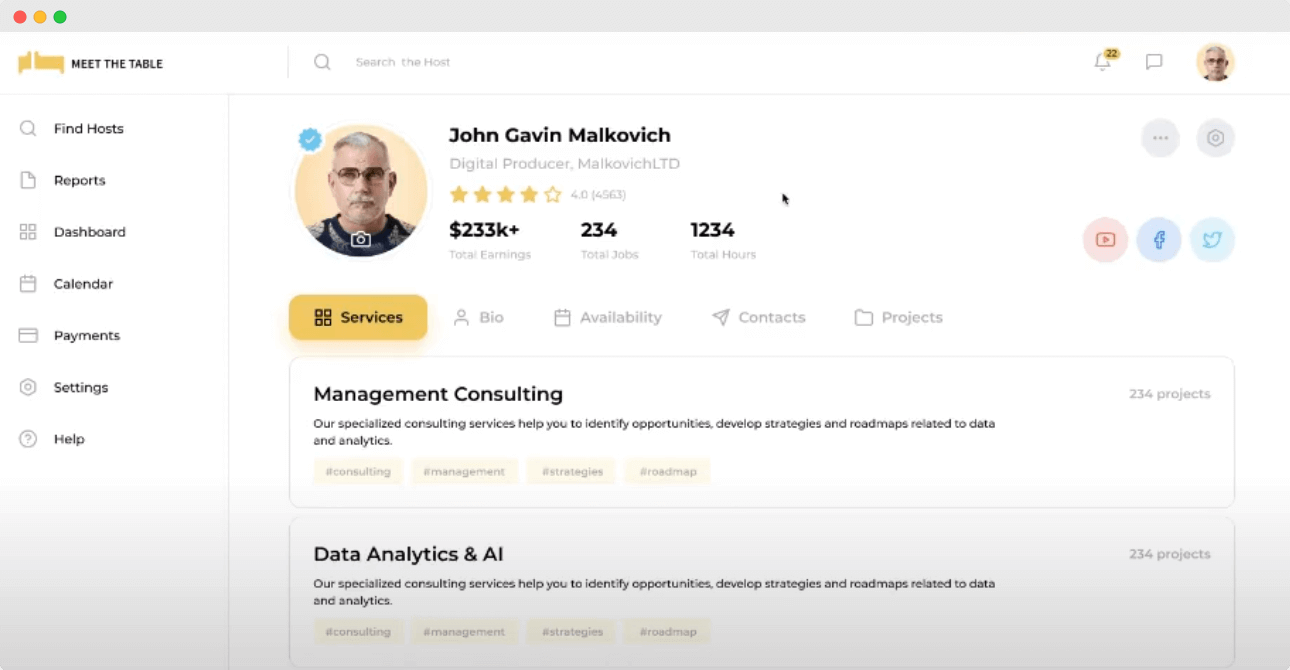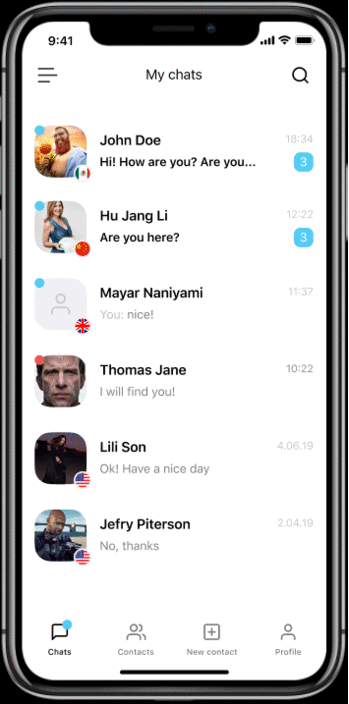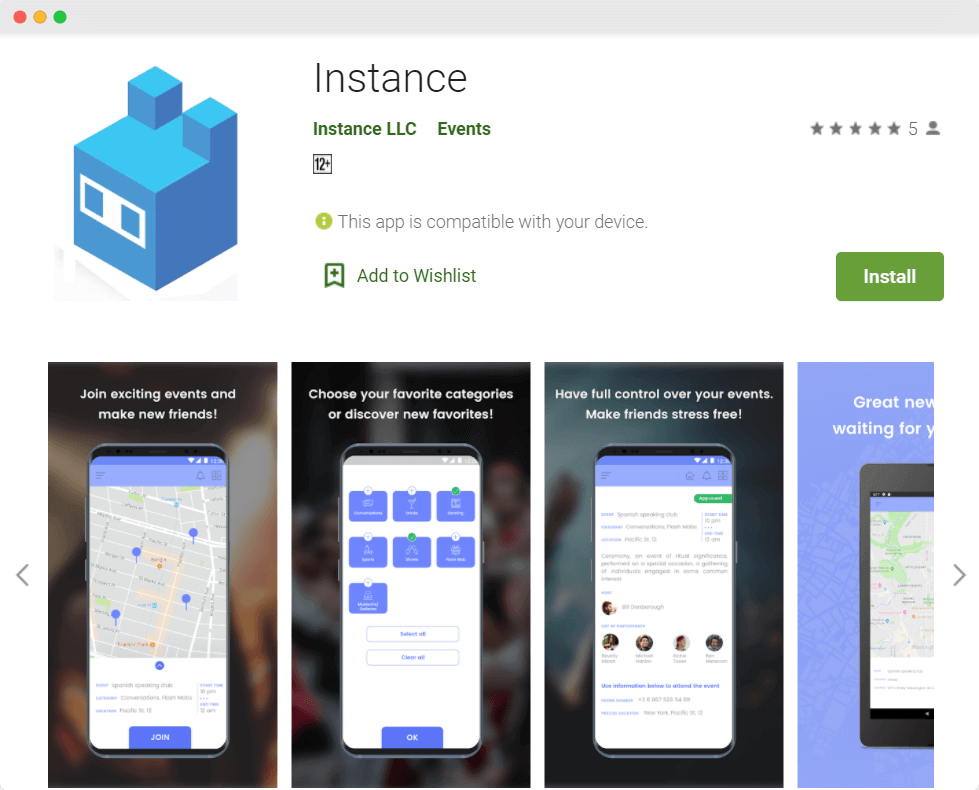Developing a successful virtual events application
- Virtual events are the new normal: what has changed?
- The functionality of the best online event platform providers
- Trade show platforms
- Virtual conference platforms
- Video call applications
- Selected features for virtual event software
- Video streaming tech stack for virtual event software
- Virtual event software development: The APP Solution experience
- Event app development: the final word
Let’s face it. The event industry has been strongly affected by the global pandemic COVID-19. As a result, thousands of events have been canceled or postponed.
But there is a bright side. Some organizations successfully adopted online event platforms.
The first conference streamed online on a virtual event platform was Google Cloud Next ’20, who’s example inspired Oracle, Adobe, and Cisco to organize a digital-first conference.
Soon, even big cross-industry conferences, including Collision and SaaS Global Forum, adopted live streaming events.
Live streaming is the only possible way to arrange an event while upholding participants’ safety and health. Virtual events platforms also help event organizers to meet financial obligations and minimize losses caused by the global pandemic.
What does it mean?
Live streaming has become the must-have feature for all event applications, either Web or mobile.
But what If your event app doesn’t have this feature?
Beware that users will sooner or later go to software providers who offer live streams. In another scenario, you power up the app with live streaming and remain protected from losing users and profit.
Despite the scenario you chose, we are here to inform you about an updated feature list for a virtual events management platform, and technologies to integrate them.
Case Study: Video Streaming App Proof of Concept
Virtual events are the new normal: what has changed?
The adoption of live streaming technologies is changing the events industry from the inside. And here’s how:
- More opportunities
When everything, from the number of tickets sold to email marketing reports, is located in a virtual events platform, you need an effort to organize, promote, and run an event. The virtual events platform also allows visitors to access the recorded stream at any time and discuss it with other participants in live chat. Thus, such platforms have the potential to extend an event’s shelf life.
- New business model
Organizing conferences or trade shows on a virtual event platform is more affordable, compared to offline events. You no longer need to pay for boosts, renting stages, and expensive equipment. Thus, event organizers should apply different business models to video streams and invest more in marketing campaigns to enhance a wider audience.
- Hybrid events
By the time offline events are a safe place to visit, organizers will apply hybrid events, hold a live event and offer live-streaming capabilities to extend their reach and enhance a wider audience.
Live streaming technologies are changing, not only the event industry but also user demand. Now, immersive event experience, networking opportunities, and integrations with sales and marketing tools are on top of the requirements for an event management platform. And there are software providers who meet the demand.
HOW TO DEVELOP AN APP LIKE NETFLIX
The functionality of the best online event platform providers
The market for meeting applications is relatively new. However, there are already strong players you are about to compete with, targeted at different event types. So, let’s look at your competitors in more detail.
Trade show platforms
Some virtual conference platform providers try to replicate the in-person event experience of attending big conferences and trade shows. For this purpose, virtual event platforms offer digital exhibition halls, chatrooms, sponsor boosts, and even breakout rooms.
The video below demonstrates the capabilities of 6Connect, the platform for live streaming conferences.
[Source: 6Connex]
Virtual conference platforms
Other event platform providers are betting on attendee engagement via instant messages, pools, and social sharing. One example is Hopin, a virtual conference software, launched on Jun 5, 2019.

During the global lockdown, Hopin hosted 28,248 events, compared to 1070 events in January 2020.
Apart from messaging and social sharing functionality, that platform has handy tools for organizers. With Hopin virtual event software, you can create a virtual conference in several minutes, customize the design branding, sell tickets, and view analytics.
Video call applications
These types of virtual events software providers are targeted at small digital events-workshops, business meetings, group discussions, etc. Thus, they don’t include marketing or sales tools, and payment gateway. Applications like Zoom and Vimeo have basic functionality for video calls – live streaming, event scheduling in built-in Google Calendar, sharing screens, and recording meetings.
As you see, virtual event software providers include far more features than just video streaming. Now, it is time to consider a feature list for your events management platform.
EVERYTHING YOU NEED TO KNOW ABOUT CLOUD KITCHENS: PROS, CONS, AND TECH STACK
How much will your event app cost?
Estimate right nowSelected features for virtual event software
After analyzing existing online events software, we have gathered the most demanding features in the following list:
- Attendee profile. Before participating in online events, users should register to the event management platform using email and a password, or via social login via Facebook or Linkedin. Then, they receive access to a personal profile and fill in their personal information.
- Event registration. Organizers can create public or invite-only online events, write a description, start and finish date and time, and create a schedule.
- Speaker booths. Add this feature if you are willing to develop an event streaming platform for global events with multiple speakers. Every speaker creates a profile, adds and edits their personal information.
- Event page. Here, visitors can find online events description, date and time, a progress bar with time left, hosts information with links to their social media profiles, the number of registered attendees, and a register button.
- Payment gateway. Attendees can pay for events via credit cards, PayPal, Google Pay, and organizers receive money to their bank accounts.
- Live chat. Participants can ask the speaker questions and communicate via a built-in life chat.
- 1:1 conversations. Apart from group chats, visitors and speakers can chat via private chat rooms.
- Recording. This is a handy feature to increase attendee engagement. The event management platform automatically records streamed videos, creates a link to recorded video sessions, and sends it to attendees.
- Social sharing. Users can share events, speakers, and schedule them via Facebook, Linkedin, and Twitter.
- Integrations. By integrating email marketing (Mailchimp) and sales tools (Salesforce), you will add value to organizers. With such integrations, organizers run ads, track their performance, and measure results without leaving your platform.
- Reporting and metrics. In this section, organizers can access information about the number of registered users, the total amount of tickets sold, and other reports.
- Video streaming. The virtual event software connects to a speaker’s camera and microphone and streams video and audio files to attendees.
Live streaming is the core functionality for all virtual event software. But it isn’t easy to build. The quality of streaming videos could drop if too many people join the stream.
Virtual event software requires significant computing power to keep video quality high. It also needs resources to receive, encode, and send videos from one source to numerous viewers. Let’s see what technologies enable high-quality video streaming.
MEET THE TABLE: BUSINESS EVENT MANAGEMENT AND NETWORKING PLATFORM
Video streaming tech stack for virtual event software
All of the technologies we have listed below will power the virtual event app’s backend. The backend is the part of the application users can see or access. Now, before we dig deeper into the details, let’s clarify how video streaming works.
All streaming videos go through the following steps:
Step 1. Capture. The camera captures visual information or raw video data.
Step 2. Segmentation. Videos consist of a lot of digital information and take a long time to send through the Internet. Thus, streaming videos are divided into smaller, 2-3 second parts.
Step 3. Compression and encoding. Compression removes redundant video information that does not change from one short video fragment to another. Encoding means changing the video format of streamed data to standard video formats (H.264, VP9, AV1, HEVC)
Step 4. CDN distribution and caсheing. Streaming from an original server, located in a particular geographical location, may cause delays and increase the server’s workload. To avoid delays in the video, you need a CDN( Content Delivery Network) of servers that cache and serve the content instead of an original server. CDN eliminates streaming from an original server and makes live streams available for numerous users from different locations with minimal latency.
Step 5. Decoding and playback. User’s devices receive streaming data sent by CDN, encode, and decompress video data. Then, a video player within the browser interprets fragmented video segments, and the video plays.
BEST DISTANCE LEARNING SOFTWARE FOR EFFECTIVE REMOTE EDUCATION
Now, the question arises. How to put all these processes into the online events platform?
You will need WebRTC.
WebRTC is an open-source streaming protocol. Open source means the project’s code is available to anyone at no cost. WebRTC allows real-time audio and video data streaming in Web and native app applications leveraging two-way communications channels.
But, WebRTC wouldn’t be enough to empower event software with video streaming.
The virtual event platform also requires the following components:
CDN. As we said, CDN ensures high-quality video streams. For a content distributed network, we suggest Google CDN. This integration uses HTTP(S) Load Balancing as the origin of cacheable content and delivers a mix of static and dynamically-created content through one global I.P. address.
Cloud service. This part of the backend’s architecture will perform as an original server that will send compressed video parts to CDN. The cloud will also host other app architecture components. The best choice here is the Google Cloud Platform.
Database. Before sending compressed video data to end-users, WebRTC will send it to the app’s database, located on the cloud. We suggest Mongo B.D. as the database of choice.
Now that you know what the backend needs for video streaming, in theory. But your virtual event platform may require other technologies to apply. To ensure the tech stack is tailored to your app’s needs, receive a free consultation from the event mobile app developer.
HOW TO MAKE A VIRTUAL ASSISTANT LIKE SIRI AND GOOGLE ASSISTANT
Virtual event software development: The APP Solution experience
As event app developers, we are working on Meet The Table, the platform for arranging business events.
Meet The Table will help business people from South Korea to find U.S. business partners, and locals from New York, who will help Koreans with language, laws, and cultural differences.

[Meet The Table design prototype]
Meet The Table users can arrange virtual business events with videoconferencing. Users can communicate in live chat with an online translation. The app translates Korean to English and English to Korean in real-time.

[The real-time translation of messages, The APP Solutions prototype]
We also developed Instance, the event management mobile app. Users can explore new events nearby, search for an event by category, and invite friends to join. The app also includes event management features, instant messaging, and geolocation functionality.

CHOOSING TELEMEDICINE SOFTWARE DURING COVID-19: A COMPLETE GUIDE
Event app development: the final word
As a result of the global pandemic, closed borders, and social distancing measures, all events moved from offline to online. An event management platform with live streaming is the optimal way of hosting events of any type – from small workshops to cross-industry trade shows.
In the future, event organizers will likely apply hybrid events leveraging both in-person and digital components. Key speakers will gather in one physical location with a limited number of attendees, while others will watch a live stream at home. Thus, the demand for virtual event platforms will remain high for several years.